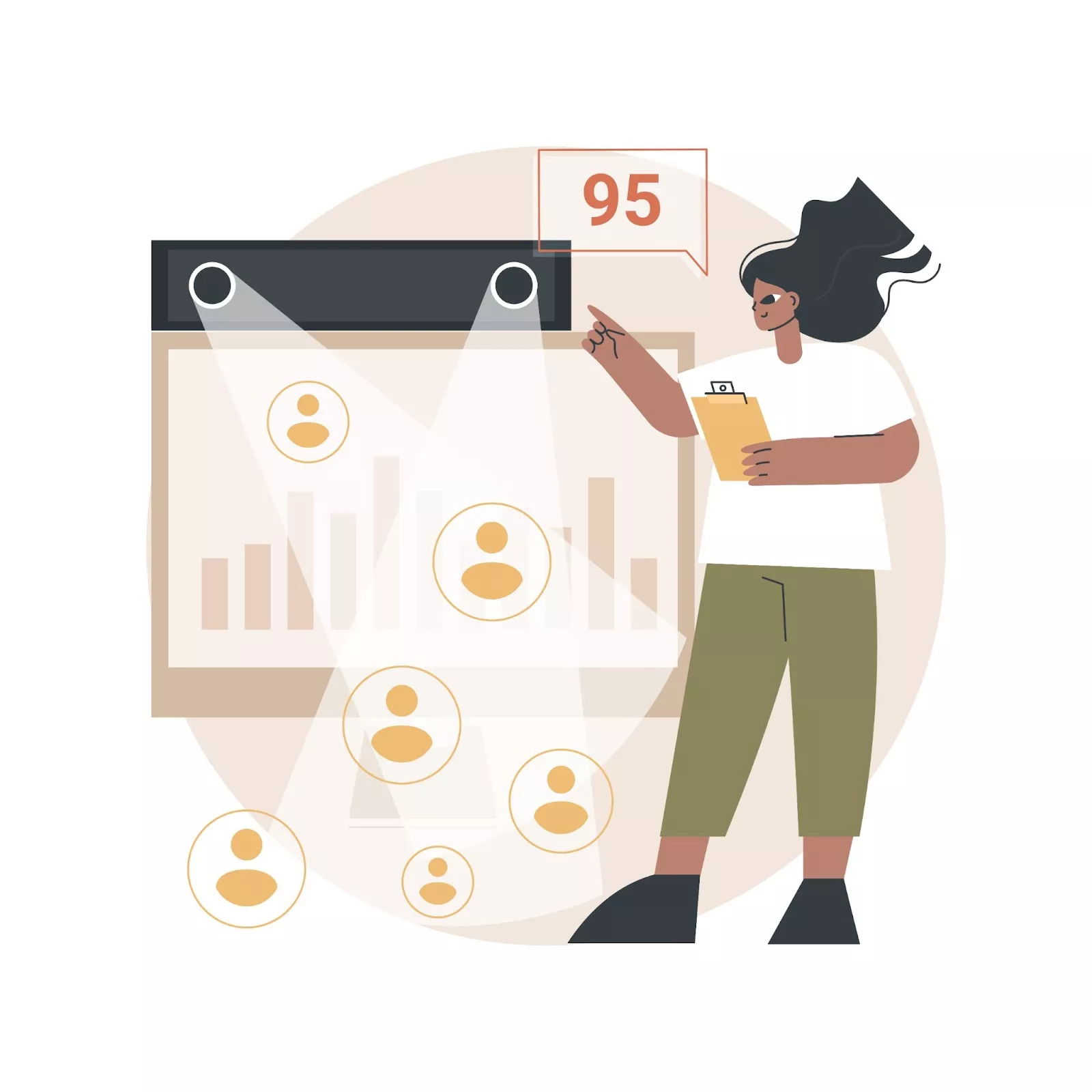
If you can ascertain visitors’ intent, you can provide them with what they want. This enables you to produce more beneficial content, enhance user experience on your website, offer the appropriate items, and more.
In this simple guide, we’ll explain how to read the intentions of WordPress website users and provide some helpful advice.
Let’s dive in!
What is Visitor Intent on a Website?
The term “website visitor intent” simply describes the purpose or goal a user is attempting to accomplish on your WordPress website or the reason they initially clicked on it from search results.
You may categorize visitors’ or users’ purpose into four categories to better understand it:
Navigational: Intent happens when a user visits your website to locate a link to the contact form or searches for your brand name in a search engine to get the website URL. For example, a visitor may want to contact you regarding guest posting by completing a contact form.
Informational: It refers to when consumers are researching and seeking details about a good or service. Informational aim enables users to learn more about a subject or find a solution. Before making a purchase, a consumer might, for instance, be looking for an article to learn more about your program.
Commercial: Customers may visit your website to compare various goods and services. When this occurs, the visitor’s intention is considered commercial. The visit aims to determine which good or service is superior and which one they should purchase.
Transactional: A visitor to your website who intends to make a purchase is said to have a transactional intent.
9 Tips to Understand WordPress Website Visitor’s Intent
Examine the Website Analytics

Examine the analytics information for your website first. Information about user behavior, such as the webpages they visit, how long they remain on, and their activities, may be found on platforms like Google Analytics.
Analyzing this data, you can find patterns and trends that allude to the visitor’s goal. A mismatch between the content and visitor expectations may be indicated by looking for pages with high bounce or exit rates.
Segmenting Your Audience

Different people browse websites for different reasons. Customizing your content and design for distinct user groups can be achieved by segmenting your audience according to demographics, behavior, or other factors.
For instance, tailor their experiences to the needs of returning consumers as they can have different goals than first-time visitors.
Tracking The User Behavior to better understand the intent

Monitoring user behavior on your website is another technique to determine the purpose of visitors. Use analytics tools to collect information on the pages visitors view, their duration on each page, and the activities they do.
You can better comprehend their goals and interests by using this information.
Making use of heatmaps
Tools for heatmaps show you where visitors are clicking and scrolling on your website visually. This may help you understand their intentions even better.
By analyzing which parts of your website draw the most attention, you can determine what visitors are searching for or what information they value most.
Keywords Research
Not only can keyword research help with SEO, but it may also reveal what your target audience is looking for.
You may find out what keywords and phrases your target audience uses in their specific search queries using tools like SEMrush or Google’s Keyword Planner.
You may better connect your content with the intent of your visitors by optimizing it around these keywords.
Monitor Internet social media
Online reviews and social media can offer insightful qualitative information about what people are saying about your website.
Watch for mentions, reviews, and comments about your website or business. This user-generated content can offer direct insights into visitors’ goals, levels of satisfaction, and potential improvement areas.
Keep an eye on conversion rates
By tracking your conversion rates, you can gauge how well your website performs at reaching its intended objectives—whether generating interaction, acquiring leads, or closing sales.
A low conversion rate could mean the user experience or content you’re offering doesn’t match your visitors’ intentions.
Make use of A/B testing
Two slightly different webpage versions are created for A/B testing, and the visitor experience with each version is compared.
This can help you determine which aspects or messages your audience responds to the most and grasp the motivations behind their behavior.
Conduct User Testing
Real users engage with your website during user testing, giving you feedback and insights. This practical method can highlight aspects of user intent that analytics alone might miss.
User testing can reveal problems, misunderstandings, or strange behavior that might indicate a mismatch between your site’s intended usage and design.
Conclusion
Understanding the intent of your WordPress website visitors is crucial for delivering a personalized and engaging user experience. Implementing the 9 tips mentioned can give you insights into user behavior, optimize content, and enhance website performance.
You can develop a deeper comprehension of your audience’s objectives, preferences, and problems by putting the seven suggestions in this article into practice.
Equipped with this perspective, you can make well-informed and better choices to improve the user experience on your website and accomplish your online goals.
FAQs
Why is understanding visitor intent necessary for a WordPress website?
Knowing visitor intent helps tailor content, improve user engagement, and increase the likelihood of conversions. It also enhances the overall user experience.
How can I analyze visitor intent on my WordPress site?
Utilize tools like Google Analytics, heatmaps, and user surveys to gather data on user interactions, preferences, and feedback, providing valuable insights into intent.
Are there any plugins in WordPress designed explicitly for understanding visitor intent?
Yes, plugins like Hotjar, Crazy Egg, and Mouseflow offer features like heatmaps and session recordings, which can help you know how users interact with your site.
How can I optimize content based on visitor intent?
Conduct keyword research, create targeted content, and regularly update your website to meet your audience’s evolving needs and interests.
Is mobile responsiveness important when considering user intent?
Absolutely. With the increasing number of users using websites on mobile devices, ensuring a seamless and responsive mobile experience is crucial for understanding and meeting user intent.
How often should I analyze visitor intent data?
Review data regularly, preferably monthly, to stay informed about changing user behaviors, preferences, and trends.
Can understanding visitor intent impact SEO performance?
Yes, aligning your content with user intent can improve SEO by creating more relevant and valuable content, potentially leading to higher rankings on search engine results pages.



